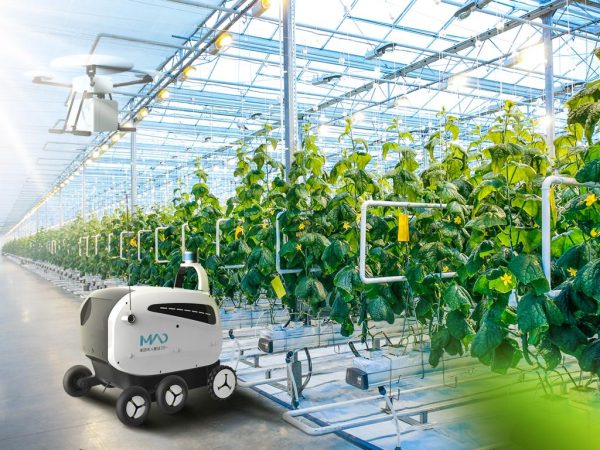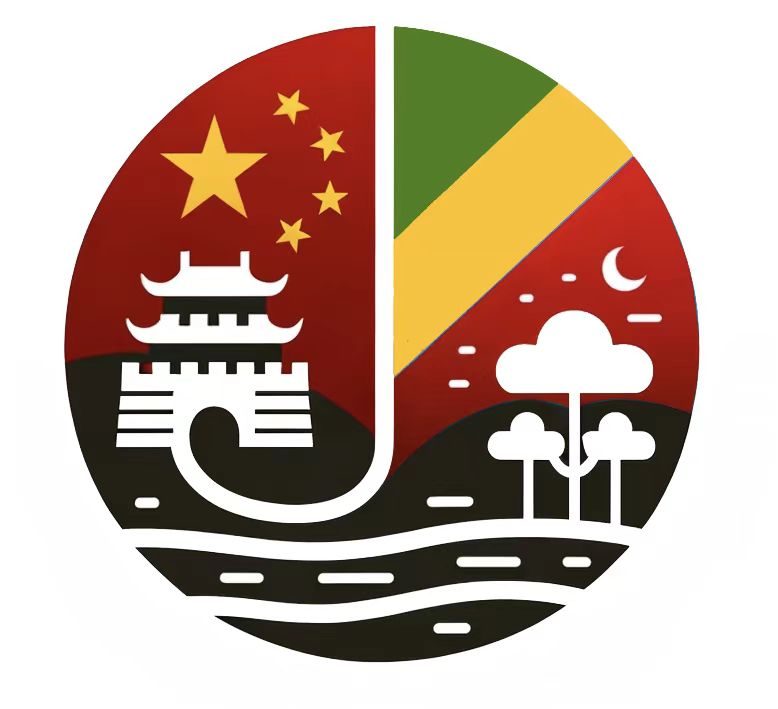Intelligent Agriculture
The current situation of the development of smart agriculture in China
With the continuous progress of science and technology, especially the development of information technology and big data, smart agriculture has become an important trend in the development of modern agriculture. As one of the world’s largest developing countries, China’s agriculture has always been an important part of its economic base. In recent years, China has made remarkable achievements in promoting the modernization of agriculture, especially in the application and development of smart agriculture. With the help of high-tech means such as the Internet of Things, artificial intelligence, big data, drones, robots, etc., the infrastructure of China’s smart agriculture has been gradually improved, and intelligent technology has gradually become an important support for agricultural production.
Infrastructure construction of smart agriculture
China’s smart agriculture development cannot be separated from the support of information technology. In recent years, the state has vigorously promoted the construction of agricultural informatization and established an agricultural information system based on the Internet of Things (IoT) in agriculture, which involves a number of links such as agricultural production, logistics, sales and processing. IoT technology is widely used in agricultural fields, greenhouses, farms and other places, through sensors real-time monitoring of soil moisture, temperature, climate change, pests and diseases and other data, to help farmers accurately grasp every aspect of agricultural production. Intelligent agricultural management systems based on this system can provide comprehensive decision support, enabling farmers to manage production more efficiently and cost-effectively.
For example, agricultural IoT technology can help farmers achieve automated control in irrigation, fertilization, dosing, etc., reducing manual intervention and improving production efficiency. At the same time, the widespread application of data collection, cloud computing and big data analysis makes agricultural production management more accurate and decision-making more scientific. Through these technical means, farmers are able to grasp the dynamics of crop growth in real time and make timely adjustments to achieve optimal production results.
Intelligent Agricultural Equipment and Robot Application
In terms of intelligent agricultural equipment, Chinese agricultural enterprises and research institutions continue to innovate and promote the application of various types of agricultural robots. For example, in the planting industry, driverless agricultural machinery, automated seeding, fertilization, harvesting and other robots are gradually being put into use. Through unmanned intelligent agricultural machinery, not only does it improve operational efficiency, but also effectively reduces labor costs, and it can work efficiently in environments that are not suitable for manual operation, reducing the waste of human resources.
Intelligent agricultural robots are also used in fruit and vegetable picking, agricultural pest control, soil testing and many other aspects. Especially in some highly labor-intensive crop picking, intelligent robots can efficiently replace manual labor and reduce errors and losses in manual operation. For example, drones are widely used in large-scale farmland spraying of pesticides, fertilizer and other operations, greatly improving operational efficiency and precision, while reducing pesticide use and fertilizer pollution.
Big Data and Precision Agriculture
The application of big data in smart agriculture helps farmers to be able to analyze all kinds of situations in agricultural production in a multi-dimensional and multi-level perspective. Big data can provide predictions and suggestions for agricultural production through the collection and analysis of information on soil quality, climate change, and planting structure, thus realizing precision agriculture management.
For example, through the data analysis of weather, crop growth cycle, soil nutrients and other indicators, farmers can understand the crop suitable for planting in different areas and under different climatic conditions, avoiding the waste of resources caused by blind planting. At the same time, the precision fertilization and irrigation system based on big data can carry out targeted regulation according to the actual needs of the soil, reduce over-fertilization and waste of water resources, so as to realize water saving, fertilizer saving, energy saving and improve crop yield.
Some agribusinesses in China have begun to utilize big data analytics to achieve refined management and prediction of crop growth processes. For example, the Cloud Farm platform uses big data analytics to provide farmers with precise guidance on crop cultivation, and predicts market demand through big data to help farmers rationally plan their crop cultivation structure and reduce excess production value.
Intelligent Agricultural Products Sales and Logistics
An important part of intelligent agriculture is the sales and logistics of agricultural products. With the rapid development of e-commerce, more and more agricultural producers are selling agricultural products through online platforms. The technical support of smart agriculture not only improves the sales efficiency of agricultural products, but also promotes the traceability management of agricultural products.
Through the combination of RFID technology, barcode and blockchain technology, information on the quality, origin and production process of agricultural products can be uploaded in real time, and consumers can scan the QR code to understand the detailed information of the agricultural products, thus enhancing their confidence in purchasing. In addition, the application of smart logistics makes the transportation of agricultural products more efficient, which can reduce logistics costs, ensure the freshness of agricultural products and improve the efficiency of the market supply chain.
China’s agricultural e-commerce platforms, such as Jingdong Agriculture and Alibaba Agricultural Products, have promoted the rapid development of smart agriculture. Through big data analysis, e-commerce platforms are able to accurately predict consumer demand and adjust agricultural production plans and logistics deployment according to market dynamics, facilitating the efficient operation of integrated production, supply and marketing.
Policy support and future development
The Chinese government has also made a lot of policy support in the development of smart agriculture. In recent years, the state has issued a series of policies to promote the modernization of agriculture and the development of agricultural informatization. For example, the “Internet Plus” Agriculture Action Plan proposes to promote the intelligence and precision of agricultural production through information technology; and the Strategic Plan for Rural Revitalization (2018-2022) emphasizes the need to strengthen agricultural scientific and technological innovation and enhance the level of agricultural modernization. These policies have created a favorable policy environment for the development of smart agriculture and promoted the application and promotion of related technologies.
In the future, smart agriculture has a broad development prospect in China. With the continuous development of emerging technologies such as 5G, artificial intelligence and the Internet of Things, agricultural intelligence will continue to be upgraded. The popularization of smart agriculture can not only improve the efficiency of agricultural production, but also promote the sustainable development of the agricultural industry and help China achieve the goal of agricultural modernization.
Current situation of agricultural development in the Republic of Congo
The Republic of Congo is a country located in west-central Africa, and agriculture occupies an important position in the country’s economy, with about 70% of the labor force engaged in agricultural production. However, despite its rich natural resources and favorable agro-climatic conditions, the Republic of the Congo still faces many challenges in agricultural development. Agricultural production methods are relatively traditional, technology is low, infrastructure is weak, the structure of agricultural output is homogenous, production efficiency is low, and farmers’ living standards are poor.
Dilemma of traditional agricultural model
Agricultural production in the Republic of Congo mostly relies on traditional farming methods, mainly small-scale family farming. Farmers mainly use manual labor and simple agricultural tools for cultivation and harvesting, and lack modern agricultural machinery and equipment. This inefficient production method has led to low agricultural yields and has been unable to effectively meet the growing domestic demand for food.
At the same time, agricultural production in the Republic of the Congo faces serious challenges due to poor land management systems, declining land fertility and frequent natural disasters. Traditional planting methods often rely on seasonal rains and lack accurate climate forecasts and data analysis of agricultural production, so farmers often face the inability to plan their planting in advance and lack of effective resilience to disasters.
Lack of infrastructure
Agricultural infrastructure development in the Republic of Congo is lagging behind. Transportation facilities in rural areas are inadequate, logistics and distribution costs are high, and the distribution of agricultural products is inefficient. Coupled with the low technical content of agricultural production, farmers lack the support of scientific cultivation and modern agricultural technology, which makes the process of agricultural modernization seriously lagging behind.
In addition, the lack of infrastructure such as agricultural irrigation, storage facilities, cold chain logistics, etc., makes agriculture in the Republic of the Congo face greater production risks, and the loss of agricultural products is more serious. The marketing channels for agricultural products are not smooth, making it difficult for farmers to sell their products to the market in a timely manner, thus affecting the level of income.
Introduction and development of agricultural technology.Despite the many challenges facing agriculture in the Republic of the Congo, in recent years, the government and international organizations have begun to take measures to promote agricultural development, especially in the area of agricultural science and technology and the introduction of technology. The Government of the Republic of the Congo has begun to increase its investment in agricultural modernization and has introduced advanced agricultural technologies through cooperation with international partners. For example, the Republic of the Congo has further cooperated with China and other countries in agricultural technology, with China providing support to the Republic of the Congo in agricultural machinery, intelligent equipment and advanced irrigation technology.
In addition, the Republic of the Congo has also actively promoted agricultural training programs to upgrade the technical level of farmers, especially in crop cultivation, pest and disease control, and soil improvement, through cooperation with international organizations and other countries. By improving farmers’ scientific and technological literacy and production techniques, the process of agricultural modernization is gradually promoted.
Exploration and Application of Smart Agriculture
Although the agricultural development of the Republic of Congo faces many difficulties, with the progress of global science and technology, smart agriculture has also brought new opportunities for the development of the country’s agriculture. In recent years, the Republic of Congo has gradually made some progress in the exploration of smart agriculture. By introducing information technology and Internet of Things (IoT) equipment, the Republic of Congo is trying to improve the inefficiency of traditional agriculture.
The application of China’s smart agriculture technology in the Republic of Congo has begun to bear fruit. Through intelligent agricultural equipment, such as drones and agricultural robots, China’s advanced technology is helping the
Republic of Congo improve agricultural production efficiency, reduce labor costs and improve the quality of agricultural products. Especially in irrigation, soil management and agro-meteorological monitoring, the use of intelligent equipment has provided technical guarantee for the sustainable development of agriculture in the Republic of Congo.
With the deepening of cooperation between China and the Republic of the Congo in the field of agriculture, smart agriculture technology is expected to further promote the modernization of agriculture in the Republic of the Congo, increase agricultural production efficiency, improve the living standards of farmers and boost the development of the country’s agricultural economy.

The “Modern Agricultural Resources Intelligent Management and Application Research Laboratory” declared by Huzhou Normal University was officially approved as a provincial key laboratory through the working procedures of declaration, preliminary examination, field visit and centralized evaluation.
This key laboratory is jointly declared by the College of Information Engineering and the College of Engineering of Huzhou Normal University, and is constructed with the support of two provincial first-class disciplines – Computer Science and Technology, Mechanical Engineering and the key discipline of Huzhou City – Information and Communication Engineering. At present, three research directions have been formed, including agricultural resource data knowledge characterization research, agricultural data mining and agricultural process control research, and modern agricultural resource control integration research, etc. It will systematically carry out the research and development of the technology related to the processing and application of agricultural resource data, and manage, compute, analyze, and apply the data of agricultural resources in a more advanced and scientific way, so as to effectively promote the modernization of agriculture in the province and bring together high-tech talents in agriculture. It can effectively boost the level of modernization of agriculture in our province and the convergence of agricultural high-tech talents, and at the same time accelerate the industrialization of agricultural informatization research and development results.
The director of the Key Laboratory is Prof. Jiang Yunliang of Huzhou Normal University, and Academician Tan Jianrong of the Chinese Academy of Engineering is the director of the Academic Committee of the Laboratory. There are 46 scientific researchers in the laboratory, including 34 with full senior titles, 37 with PhDs, and 15 with national and provincial talents, forming a stable high-level research team combining both professional and part-time research.
Up to now, Huzhou Normal University has 7 key laboratories and engineering laboratories above the provincial and ministerial levels, which creates a good platform for the enhancement of the scientific research and innovation capacity of Huzhou Normal University.

